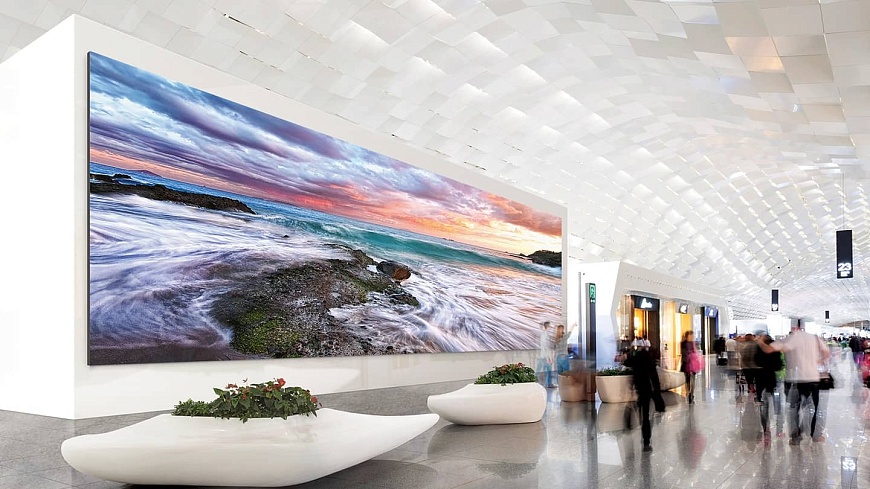
What to look for when choosing LCD video walls
An LCD video wall is the most popular type of video wall made up of LCD panels. Each panel displays its own piece of a single image. The joints between the displays are minimal, and the signal is adapted to eliminate the appearance of visual artifacts or image lag. There are many different scenarios for using LCD video walls: they are widely used in advertising, show business and other areas.
Applications of LCD video walls
Liquid crystal video walls are one of the most effective means of displaying visual information, and therefore are widely used in a variety of industries and areas of activity.
- Advertising. Video walls based on LCD panels are used to show commercials in shopping and entertainment centers, boutiques. LCD video walls can also be used in outdoor advertising.
- Scaling. A video wall can serve as a dynamic showcase demonstrating certain products. In museums, exhibitions or cultural centers, a video wall can be used both to create a background for exhibits and as an element of hall decoration.
- Information boards. In airports and train stations, an LCD video wall can display important information such as route and flight schedules, information on arriving trains, directions to terminals, etc. In stadiums, a video wall displays replays of highlights and the current score of a match, and in financial institutions – currency and stock market quotes.
- Video walls in control centers. Control centers and situation centers require visualization of large volumes of information coming from different sources. LCD video walls are the best at quickly and accurately displaying graphic data, diagrams and text.
- Stage decoration. LCD video walls are very often used in the decoration of concerts and other mass cultural events. The video wall broadcasts angles from different cameras filming the performers and special effects, and even simulates set elements.
- Video surveillance systems. In this case, the LCD video wall reproduces images from different cameras with the ability to scale any of them to fill the entire screen.
- Unconventional visual design. The video wall can be used as an independent decorative item, as well as to create unusual visual or stylistic solutions. Examples include installing a video wall in a gym displaying a bike path in real time, or designing a runway at a fashion show.
The choice of one or another LCD panel for a video wall depends on several factors:
- Application area. In some areas, for example, in situation centers, high image clarity is required. Whereas in other cases, a lower image resolution and lower brightness will be sufficient.
- Content resolution. Both the video wall as a whole and individual LCD panels can have different maximum resolutions. When choosing a specific model, you should rely on the type of content being displayed and its quality.
- Requirements for display accuracy. This characteristic refers not only to the already mentioned resolution of the LCD video wall, but also related characteristics: the width of the “seams” between the panels, image correction capabilities to reduce image lag and reduce dynamic artifacts, synchronization of signals from multiple sources, etc.
- Organization budget. If … the characteristics of the video wall are not required to solve the problem facing the organization, then it is quite possible to pay attention to models from the manufacturer’s available line of LCD panels. Savings can be up to 50%.
- Efficiency. LCD video walls can vary significantly in energy consumption. This parameter depends on the screen size, its resolution, maximum brightness, the presence of adaptive brightness control options, and others. The criterion is important when it is assumed that the video wall will be used in conditions of limited energy consumption, or when it is necessary to reduce the cost of equipment ownership.
Panels for video walls
Video walls consist of identical display modules called panels. The operating principle of the panels, their design and installation method differ, which means that in each specific case the choice of panels for video walls should be made depending on the specific goals and tasks that are supposed to be solved with the help of the video wall. Modular LCD panels for video walls are used to create very large images. The panels are arranged in rows in a single “matrix” of standard sizes – two by two, three by three, four by four, etc.






